Sub-Saharan Africa
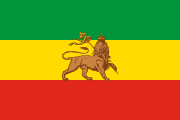
Ethiopia
royal flag 11 Often (but not always) flown by the royal house and the government.

Ethiopia
national flag 22 Flown by anyone.

Ghana

Guinea
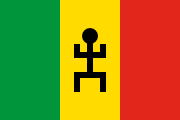
Mali

Cameroon
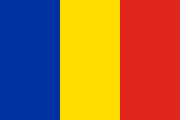
Chad
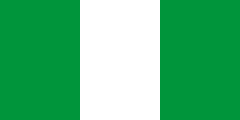
Nigeria
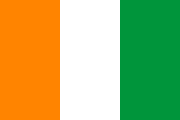
Ivory Coast
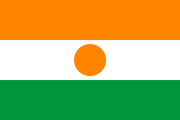
Niger
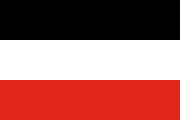
Upper Volta
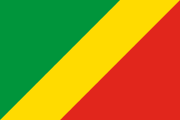
Congo-Brazzaville
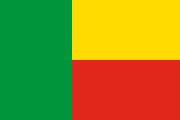
Dahomey

Malagasy Republic
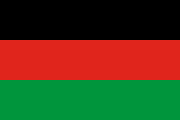
Malawi
MCP flag 33 Flag of the Malawi Congress Party, which sought independence for British Nyasland. Direct predecessor of the modern flag of Malawi. The colony was part of the nominally self-governing Federation of Rhodesia and Nyasaland, which had a rarely-used British ensign with the federation coat of arms.
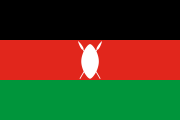
Kenya
KAU flag 44 Flag of the Kenya African Union, which sought independence from Great Britain. Direct predecessor of the modern flag of Kenya. The colony also had a rarely-used British ensign with a red lion badge.
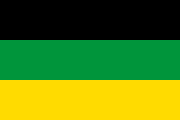
African National Congress
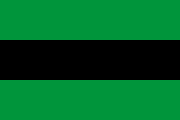
Tanganyika
TANU flag 55 Flag of the Tanganyika African National Union, which sought independence from Great Britain. Direct predecessor of the 1961 flag of Tanganyika, and by extension the flag of Tanzania. The colony also had a rarely-used British ensign with a giraffe badge.
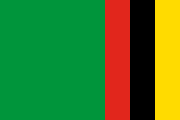
Zambia
UNIP flag 66 Flag of the United National Independence Party, which sought independence for the British colony of Northern Rhodesia. Direct predecessor of the modern flag of Zambia. The colony was part of the nominally self-governing Federation of Rhodesia and Nyasaland, which had a rarely-used British ensign with the federation coat of arms.

Liberia

Central African Republic
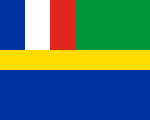
Gabon
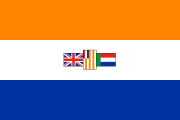
South Africa
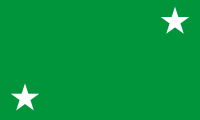
Togo

Congo-Léopoldville
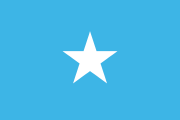
Somalia

Eritrea

Buganda
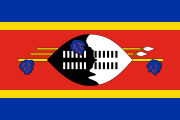
Swaziland

Zanzibar
Middle East and North Africa

Turkey
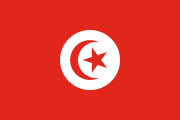
Tunisia
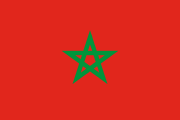
Morocco
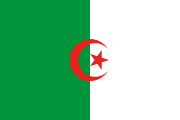
Algeria 77 Flown by nationalists and the government-in-exile. The French colony in Algeria did not have an official flag.
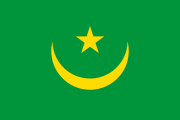
Mauritania

Libya
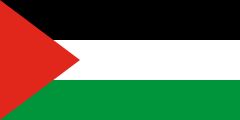
Palestine
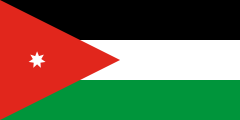
Jordan

Iraq

United Arab Republic

Israel
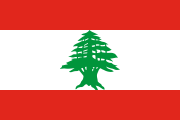
Lebanon
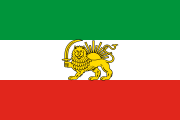
Iran
state flag 88 Flown by the government, and often by private citizens. At sea, and in certain ceremonial settings on land, the ratio was 1:3.
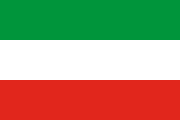
Iran
national flag 99 Allowed to be flown by anyone. At sea, the ratio was 1:3.
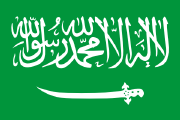
Saudi Arabia
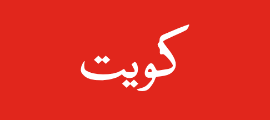
Kuwait 1010 There were many variations of this flag, depending on who was flying it and when. Some versions would have added inscriptions, decorations or royal symbols. The flag could also be triangular.

Yemen
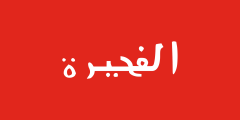
Fujairah

Muscat and Oman
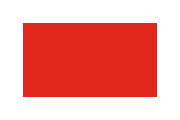
Ras al-Khaimah · Sharjah

Abu Dhabi
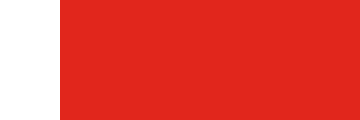
Dubai · Ajman · Umm al-Quwain
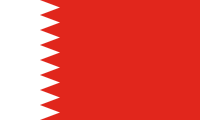
Bahrain

Qatar

Sudan

South Arabia
federal flag 1111 Flag of the Federation of South Arabia, the British protected state at the core of South Arabia.
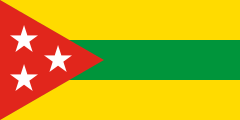
Kathiri State

Qu'aiti State

Kurdistan

Assyrians

Druze
Western Europe
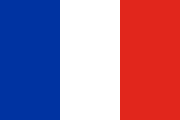
France

Italy

Ireland

Andorra
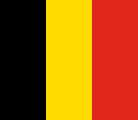
Belgium

Netherlands

Luxembourg

Austria
national flag 1212 Flown by private citizens and municipalities.

Austria
federal service flag 1313 Flown by the federal government and the armed forces.

Spain
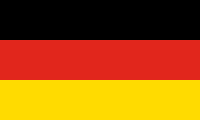
West Germany

East Germany
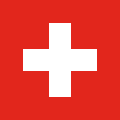
Switzerland
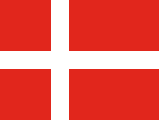
Denmark
national flag 1414 Allowed to be flown by anyone.
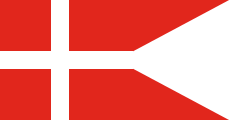
Denmark
sovereign flag 1515 Flown by the royal house, the government, and the armed forces. Also granted to a select list of private institutions and companies.

Norway
merchant flag 1616 Allowed to be flown by anyone.

Norway
state flag 1717 Flown only on state-owned buildings and naval ships.

Faroe Islands

Iceland
national flag 1818 Allowed to be flown by anyone.

Iceland
state flag 1919 Flown on government buildings and coast guard ships.
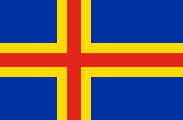
Åland
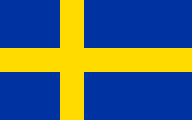
Sweden 2020 Flown for all purposes. A three-tailed version of the national flag is flown by the military.

Finland
national flag 2121 Allowed to be flown by anyone.
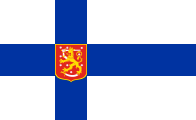
Finland
state flag 2222 Flown by the government, border guard, and public universities. The armed forces fly a version with a swallowtail cut.
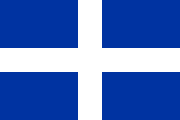
Greece
land flag 2323 Flown on land within Greece. The military flag had a crown in the centre of the cross.
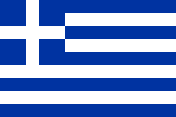
Greece
sea flag 2424 Flown at sea and abroad. The naval ensign had a crown in the centre of the cross.
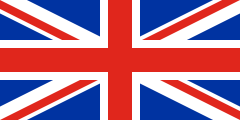
United Kingdom
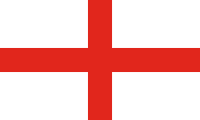
England · Guernsey
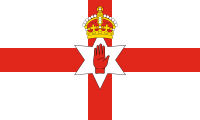
Northern Ireland 2525 Flown by the government, sporting teams and by some private citizens. More or less exclusively a unionist symbol.

Scotland

Jersey

Wales

San Marino

Liechtenstein
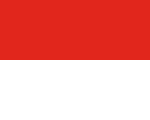
Monaco
national flag 2626 Allowed to be flown by anyone.

Monaco
princely flag 2727 Flown over the Prince's Palace and government buildings.

Vatican City
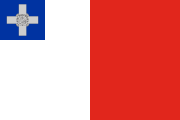
Malta
traditional flag 2828 Flown by civilian ships. Plain flags without the George Cross were also common. The colonial government had a blue ensign with the Maltese coat of arms on it.

Portugal

Basque Country
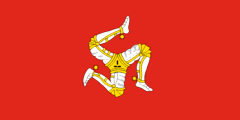
Isle of Man

Catalonia
senyera 2929 The traditional Catalan flag.
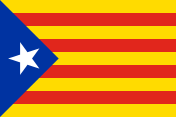
Catalonia
estelada 3030 The flag preferred by supporters of Catalan independence.

Brittany
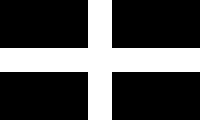
Cornwall

Galicia
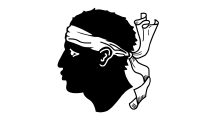
Corsica
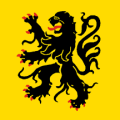
Flanders

Wallonia
Eastern Europe
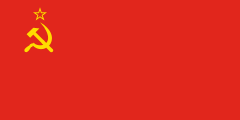
Soviet Union

Albania
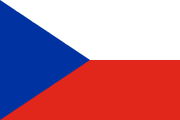
Czechoslovakia

Poland
state flag 3131 Flown over the Presidential Palace, parliament, provincial legislatures, and other government buildings. Private use highly restricted.
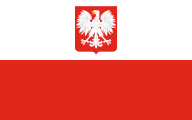
Poland
coat of arms flag 3232 Flown by embassies, airports, and merchant ships. Private use strictly banned.

Yugoslavia

Hungary
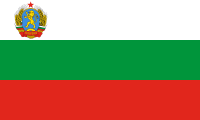
Bulgaria

Estonia 3333 Flown by the diplomatic service in exile and the Estonian disaspora. Flying the national flag was banned under the Soviet occupation.

Lithuania 3434 Flown by the diplomatic service in exile and the Lithuanian disaspora. Flying the national flag was banned under the Soviet occupation.

Latvia 3535 Flown by the diplomatic service in exile and the Latvian disaspora. Flying the national flag was banned under the Soviet occupation.

Romania
South Asia and the Indian Ocean

India
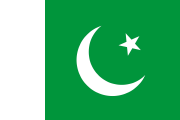
Pakistan
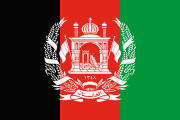
Afghanistan

Nepal

Bhutan

Sikkim
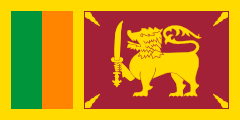
Ceylon
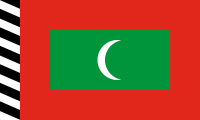
Maldive Islands

Jammu and Kashmir 3737 Flown in the Indian-controlled parts of the disputed region of Kashmir.

Azad Kashmir 3838 Flown in the Pakistan-controlled parts of the disputed region of Kashmir.

Nagaland 3939 Flown by nationalists and separatists. The Naga Hills area did not have an official flag within India.
East, Central and Southeast Asia
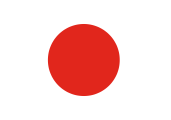
Japan

South Korea

North Korea
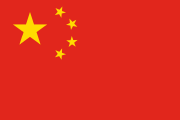
China
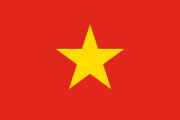
North Vietnam
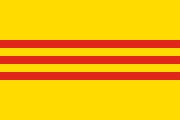
South Vietnam
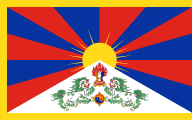
Tibet
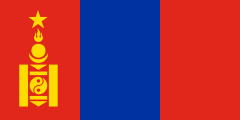
Mongolia
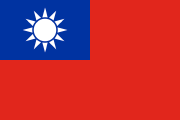
Taiwan 4040 The flag of the Republic of China, the government of Taiwan. Banned on the mainland, as the People's Republic of China claimed sovereignty over the island. Regarded as the flag of China at the United Nations.
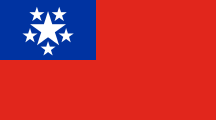
Burma

Laos
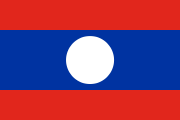
Laos
Pathet Lao flag 4141 Flown by the communist Pathet Lao government-in-exile in Hanoi.
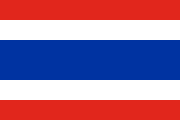
Thailand
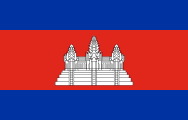
Cambodia

Philippines

Malaya
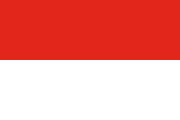
Indonesia

Singapore

Brunei

Sarawak 4242 Sarawak also had a blue colonial ensign.
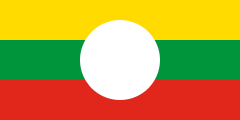
Shan

Karen 4343 Flown by Karen nationalists seeking independence and separation from Burma.

East Turkestan 4444 The national flag of the Uyghur people, banned within the People's Republic of China. Xinjiang Region does not have an official flag.
Oceania

Australia
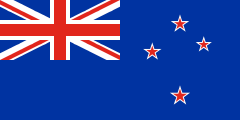
New Zealand

Hawaiʻi

Western Samoa
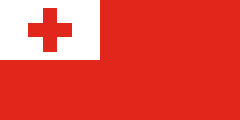
Tonga

Wallis and Futuna
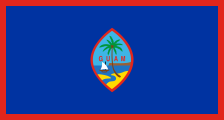
Guam
North America
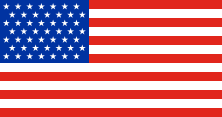
United States

Canada 4545 Not legally the national flag, but allowed to be flown wherever a "distinctive Canadian flag" was needed.

Québec
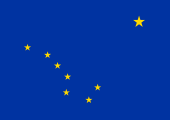
Alaska
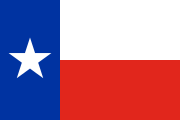
Texas

Acadia
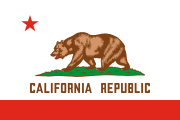
California
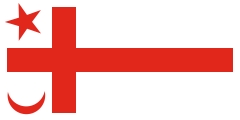
Mi’kmaq

Métis

Arapaho
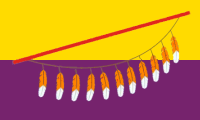
Papago
The Caribbean

West Indies Federation

Suriname

Netherlands Antilles
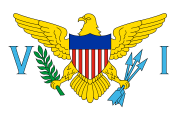
Virgin Islands (U.S.)
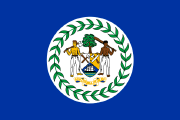
Belize
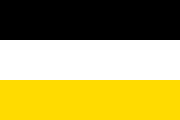
Garifuna
Latin America
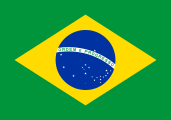
Brazil

Mexico

Peru
national ensign 4646 Flown by the government, the navy, the national police, and national sports teams. Raised at major ceremonies. The army uses a similar flag with a different coat of arms.
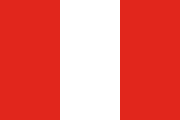
Peru
national flag 4747 Allowed to be flown by anyone.

Guatemala

Argentina

Honduras
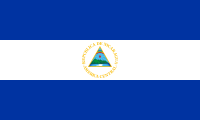
Nicaragua

El Salvador
national flag 4848 The most common flag, flown over most government buildings, at ceremonies, by diplomatic missions and often by public citizens.

El Salvador
inscribed flag 4949 An alternative government flag, most commonly flown by the armed forces but also on some public buildings and offices.
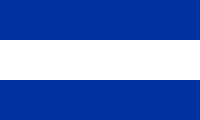
El Salvador
plain flag 5050 The simplest version of the national flag, flown by some private citizens.

Paraguay
front side

Paraguay
back side

Costa Rica
national flag 5151 The most common Costa Rican flag. Officially designated for private citizens, but in practice often used on government buildings and schools too.

Costa Rica
national ensign 5252 Flown by the government and by diplomatic missions, although also used sometimes by private citizens.

Puerto Rico
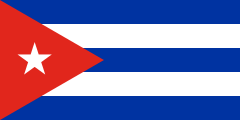
Cuba

Uruguay
national flag 5353 Allowed to be flown by anyone.

Uruguay
flag of Artigas 5454 A traditional military emblem, ceremonially flown alongside the national flag at government buildings.

Uruguay
flag of the Treinta y Tres 5555 A historic flag, ceremonially flown alongside the national flag at government buildings.

Haiti

Dominican Republic
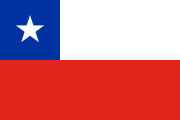
Chile
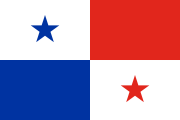
Panama

Venezuela
national ensign 5656 Flown by the government and armed forces, and unofficially used by many private citizens.
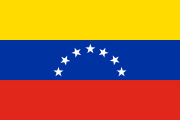
Venezuela
national flag 5757 Allowed to be flown by anyone.

Colombia

Ecuador

Bolivia
state flag 5858 Flown by the governmnent. The armed forces flew a similar flag with olive and laurel branches around the coat of arms.
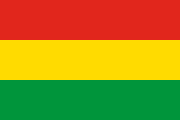
Bolivia
national flag 5959 Allowed to be flown by anyone.
Other International and Cultural Flags

United Nations
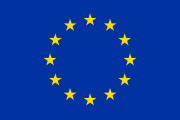
Europe

Buddhist Flag
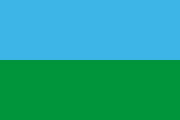
Romani

Pan-African Flag

Esperanto

Red Cross

Red Crescent
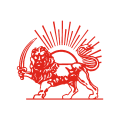
Red Lion and Sun
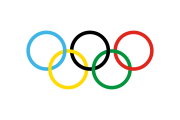
Olympic Games
Events of 1959
BRUNEI • Upon becoming an autonomous protectorate on September 29, Brunei added an emblem to its flag.



FRENCH COMMUNITY • France's colonies in Africa, now officially autonomous republics, continued adopting new flags. Congo's (adopted August 18) and Dahomey's (adopted November 16) both used the green-yellow-red colours of the African Democratic Rally arranged in novel ways to stand out against an increasingly crowded field of pan-African tricolours.


When Senegal and the Sudanese Republic united to form the Mali Federation on April 4, they used the same tricolour but added a kanaga stick figure as a distinguishing mark.
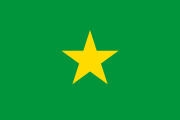
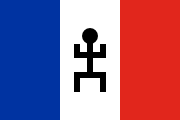


In Chad, a legislative committee also proposed adopting a green-yellow-red tricolour on June 30, but when the government learned of the new flag of Mali they deemed it too similar. The design was sent back to the drawing board, and when it was officially adopted on November 6 a blue stripe had replaced the green one.


Not every flag stuck to the RDA colours. The flags of Ivory Coast (December 3) and Niger (November 23), adopted less than two weeks apart, were both based on an orange-white-green tricolour. It's been theorized that the colour scheme is a relic of the failed Sahel-Benin Union which included the two countries, but no firm evidence has been found to support that theory. It may also just be a coincidence, as both countries have arid and fertile regions that could easily be represented by orange and green.


By the end of the year, all the African republics had adopted a unique flags. Mauritania adopted a flag with a crescent and star on April 1, reflecting its unique status in the French Community as an Islamic Republic. On June 29, Gabon adopted a flag with blue and green stripes for the forest and the sea and a thin yellow line representing the equator. Finally, on December 9, Upper Volta adopted a tricolour whose three stripes representend the Black, White and Red branches of the Volta River.



EAST GERMANY • An emblem was added to the flag on October 1.



IRAQ • A new flag was adopted on July 14, exactly a year after the revolution that deposed the monarchy.
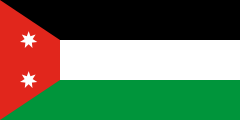


MALAWI • The Nyasaland African Congress was reconstituted as the Malawi Congress Party on September 30. The country would become officially independent under the name Malawi five years later.
KINGDOM OF THE NETHERLANDS • Suriname and the Netherlands Antilles adopted flags on December 15.


NIGERIA • On October 1, college student Taiwo Akinkunmi won a competition to design the national flag of Nigeria. A variation on his design without the red sun was adopted when Nigeria became independent the following year. Akinkunmi is still known as "Mr. Flag Man", and lives in a green and white house.
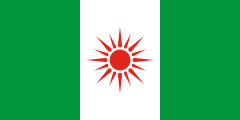
SINGAPORE • Singapore adopted a flag on December 3.

TUNISIA • Tunisia issued exact construction specifications for its flag on June 1.
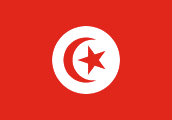


UNITED STATES • A 49th star (for Alaska) was added to the flag on July 4.
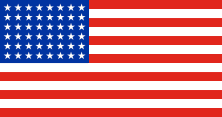


WALES • The modern Welsh flag was officially approved on February 23.
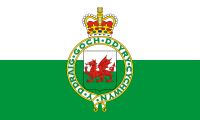


ZAMBIA • The United National Independence Party was formed on October 4. Its flag would form the basis of the country's national flag when it became independent in 1964.

Notes
1 Often (but not always) flown by the royal house and the government. ↩
2 Flown by anyone. ↩
3 Flag of the Malawi Congress Party, which sought independence for British Nyasland. Direct predecessor of the modern flag of Malawi. The colony was part of the nominally self-governing Federation of Rhodesia and Nyasaland, which had a rarely-used British ensign with the federation coat of arms. ↩
4 Flag of the Kenya African Union, which sought independence from Great Britain. Direct predecessor of the modern flag of Kenya. The colony also had a rarely-used British ensign with a red lion badge. ↩
5 Flag of the Tanganyika African National Union, which sought independence from Great Britain. Direct predecessor of the 1961 flag of Tanganyika, and by extension the flag of Tanzania. The colony also had a rarely-used British ensign with a giraffe badge. ↩
6 Flag of the United National Independence Party, which sought independence for the British colony of Northern Rhodesia. Direct predecessor of the modern flag of Zambia. The colony was part of the nominally self-governing Federation of Rhodesia and Nyasaland, which had a rarely-used British ensign with the federation coat of arms. ↩
7 Flown by nationalists and the government-in-exile. The French colony in Algeria did not have an official flag. ↩
8 Flown by the government, and often by private citizens. At sea, and in certain ceremonial settings on land, the ratio was 1:3. ↩
9 Allowed to be flown by anyone. At sea, the ratio was 1:3. ↩
10 There were many variations of this flag, depending on who was flying it and when. Some versions would have added inscriptions, decorations or royal symbols. The flag could also be triangular. ↩
11 Flag of the Federation of South Arabia, the British protected state at the core of South Arabia. ↩
12 Flown by private citizens and municipalities. ↩
13 Flown by the federal government and the armed forces. ↩
14 Allowed to be flown by anyone. ↩
15 Flown by the royal house, the government, and the armed forces. Also granted to a select list of private institutions and companies. ↩
16 Allowed to be flown by anyone. ↩
17 Flown only on state-owned buildings and naval ships. ↩
18 Allowed to be flown by anyone. ↩
19 Flown on government buildings and coast guard ships. ↩
20 Flown for all purposes. A three-tailed version of the national flag is flown by the military. ↩
21 Allowed to be flown by anyone. ↩
22 Flown by the government, border guard, and public universities. The armed forces fly a version with a swallowtail cut. ↩
23 Flown on land within Greece. The military flag had a crown in the centre of the cross. ↩
24 Flown at sea and abroad. The naval ensign had a crown in the centre of the cross. ↩
25 Flown by the government, sporting teams and by some private citizens. More or less exclusively a unionist symbol. ↩
26 Allowed to be flown by anyone. ↩
27 Flown over the Prince's Palace and government buildings. ↩
28 Flown by civilian ships. Plain flags without the George Cross were also common. The colonial government had a blue ensign with the Maltese coat of arms on it. ↩
29 The traditional Catalan flag. ↩
30 The flag preferred by supporters of Catalan independence. ↩
31 Flown over the Presidential Palace, parliament, provincial legislatures, and other government buildings. Private use highly restricted. ↩
32 Flown by embassies, airports, and merchant ships. Private use strictly banned. ↩
33 Flown by the diplomatic service in exile and the Estonian disaspora. Flying the national flag was banned under the Soviet occupation. ↩
34 Flown by the diplomatic service in exile and the Lithuanian disaspora. Flying the national flag was banned under the Soviet occupation. ↩
35 Flown by the diplomatic service in exile and the Latvian disaspora. Flying the national flag was banned under the Soviet occupation. ↩
36 Banned within the People's Republic of China. The "Tibet Area" did not have an official flag. ↩
37 Flown in the Indian-controlled parts of the disputed region of Kashmir. ↩
38 Flown in the Pakistan-controlled parts of the disputed region of Kashmir. ↩
39 Flown by nationalists and separatists. The Naga Hills area did not have an official flag within India. ↩
40 The flag of the Republic of China, the government of Taiwan. Banned on the mainland, as the People's Republic of China claimed sovereignty over the island. Regarded as the flag of China at the United Nations. ↩
41 Flown by the communist Pathet Lao government-in-exile in Hanoi. ↩
42 Sarawak also had a blue colonial ensign. ↩
43 Flown by Karen nationalists seeking independence and separation from Burma. ↩
44 The national flag of the Uyghur people, banned within the People's Republic of China. Xinjiang Region does not have an official flag. ↩
45 Not legally the national flag, but allowed to be flown wherever a "distinctive Canadian flag" was needed. ↩
46 Flown by the government, the navy, the national police, and national sports teams. Raised at major ceremonies. The army uses a similar flag with a different coat of arms. ↩
47 Allowed to be flown by anyone. ↩
48 The most common flag, flown over most government buildings, at ceremonies, by diplomatic missions and often by public citizens. ↩
49 An alternative government flag, most commonly flown by the armed forces but also on some public buildings and offices. ↩
50 The simplest version of the national flag, flown by some private citizens. ↩
51 The most common Costa Rican flag. Officially designated for private citizens, but in practice often used on government buildings and schools too. ↩
52 Flown by the government and by diplomatic missions, although also used sometimes by private citizens. ↩
53 Allowed to be flown by anyone. ↩
54 A traditional military emblem, ceremonially flown alongside the national flag at government buildings. ↩
55 A historic flag, ceremonially flown alongside the national flag at government buildings. ↩
56 Flown by the government and armed forces, and unofficially used by many private citizens. ↩
57 Allowed to be flown by anyone. ↩
58 Flown by the governmnent. The armed forces flew a similar flag with olive and laurel branches around the coat of arms. ↩
59 Allowed to be flown by anyone. ↩